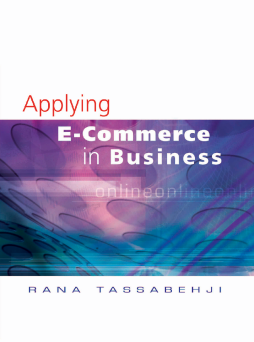
Additional Information
Book Details
Abstract
Applying E-Commerce in Business deconstructs e-commerce into its main constituents and explains how they fit together. Drawing on examples from around the globe, the book examines specific elements of e-commerce including: an overview of the subject and relevant issues and frameworks; the foundations on which e-commerce is built; the 'dot com' phenomenon and legal and ethical implications of e-commerce; the academic debate on the impact of e-commerce on economics and management thinking; and a look to the future and the potential of new technology.
Table of Contents
| Section Title | Page | Action | Price |
|---|---|---|---|
| Preface. Acknowledgements. List of figures, boxes and tables. List of acronyms. | |||
| INTRODUCTION | |||
| CBRNE - A new security risk. Past and current events of CBRNE catastrophic incidents. Enhancing awareness and preparedness for CBRNE incidents. Potential role of humanitarian aid organizations. Introduction to the Sourcebook | |||
| PART I – MANAGING THE CRISIS | |||
| STRATEGIC MANAGEMENT: NGO objectives; Key considerations; Key policy issues at headquarter and field levels; Personnel issues – protection of front line staff; Disaster Management Strategy. | |||
| TACTICAL MANAGEMENT: Field operation vulnerabilities; Hazard vulnerability analysis and risk reduction measures; Threat assessment and risk policy strategy; Horizon scanning, surveillance and advisory mechanisms; Risk management tools; Information coordination mechanisms. | |||
| FIELD STAFF SAFETY: Incident emergency response; Risk assessment and staff safety; Creation of a safe room; Re-entry; Individual emergency decontamination. | |||
| OPERATIONAL MANAGEMENT: Planning assumptions; Field response procedures; The incident response phase; Incident response procedures; Zones for emergency response operations; Medical assistance and casualty management; Humanitarian relief and assistance; NGO operation management actions; Disaster relief priorities; Humanitarian organization coordination. | |||
| PSYCHOSOCIAL SUPPORT: Chemical and biological threat; Post attack; Syndromes; Staff care; Mental health interventions. | |||
| PART II – HAZARDS: CBRNE hazards; Key chemical agents; Key biological agents; Radiation and nuclear incidents; Explosive incidents | |||
| PART III – RESOURCES: Detection and monitoring devices; Personal protection equipment; Medical countermeasures; Medical protocols for key chemical agents; Decontamination procedures; Medical protocols for key biological agents; Civil nuclear site incidents; Training and capacity building ; Directory of organizations and conventions; Quick reference cards. | |||
| References. Internet references and CBRNE related links. Endnotes. Glossary. Index. |
